
Paint & Coatings
 Ideal paints and coatings offer superior performance while reducing costs and being environmentally friendly. Nagase offers materials and coatings to meet customers’ diverse needs.
Ideal paints and coatings offer superior performance while reducing costs and being environmentally friendly. Nagase offers materials and coatings to meet customers’ diverse needs.
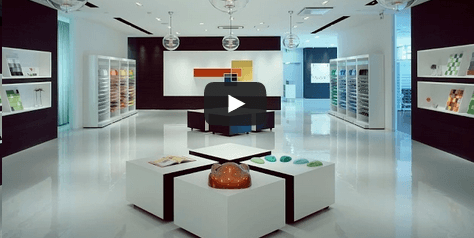 We leverage the strengths of our group companies, such as Nagase ChemteX, while providing application and formulation support via our Nagase Applications Workshop, for unique, customized solutions in paints and coatings. Partner with Nagase to innovate your brand for success.
We leverage the strengths of our group companies, such as Nagase ChemteX, while providing application and formulation support via our Nagase Applications Workshop, for unique, customized solutions in paints and coatings. Partner with Nagase to innovate your brand for success. Additives

Formulators know the challenge of balancing additive properties when formulating conductive materials, such as coatings, plastics and other end-use applications. Alternate materials can make electroconductivity difficult to customize and may provide poor stability and inconsistent conductivity performance. Using ATO-based additives addresses these challenges. Featuring both ATO and ATO-coated TiO2, Nagase supplies functional materials with higher
Adhesion Promoters
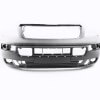
Chlorinated polypropylene adhesion promoter used on TPO substrates without surface treatment. Soluble in aromatic solvents, water, and reactive diluents (UV cure). Used for tough and transparent coatings.
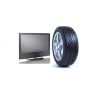
Mono- and multi-functional aliphatic epoxy crosslinkers, reactive diluents, and modifiers. Grades include high functionality, varying degrees of water solubility, low chlorine content, hydroxyl functionality, and bio-based content. Low viscosity and non yellowing. Provides good adhesion to metal and nylon substrates.
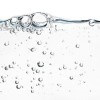
Waterborne crosslinkers with various Tg’s. Improved moisture resistance, heat resistance, drying time, film properties, and adhesion to substrates, such as polyester. Available in emulsion, solution, or granule form for compounding into thermoplastics. Combines fast cure with long pot-life at room temperature.

Formulators can use it to deliver high-performance coatings that fulfill customer needs while imparting additional processing and end-use benefits. Denacol EX-622 can be used both in traditional epoxy systems and non-isocyanate (NISO) systems. Standard epoxy curatives such as amines can be used with Denacol EX-622 for traditional epoxy systems. For NISO systems, Denacol EX-622 can

EPOLEAD PB3600 is a premium resin modifier that imparts flexibility and improves impact resistance characteristics in cured products without negatively impacting adhesiveness when formulated with polyamine and/or anhydride curing agents. Additional benefits include: Lower epoxy-equivalent weight compared to conventional epoxidized polybutadienes Contains both epoxy groups and vinyl groups in the molecule, with terminal hydroxyl groups

Maleic anhydride-grafted polyolefin resins with low impurities for interlayer adhesion (plastic to plastic or plastic to metal). Used as a coupling agent, compatibilizer, and in hot melt applications. Available in pellets, sheets, or powder.
Ceramics
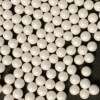
Ceramic grinding media for media mills.
Core-Shell Impact Modifiers
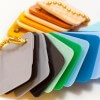
Impact modifier for thermoplastics and toughener for thermosets, epoxies, UPEs, powder coatings and UV-curable coatings.
Light Diffusion
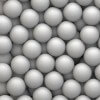
Crosslinked acrylic and styrenic microspheres. Suited for waterborne and solvent-borne systems. Excellent dispersability in paint formulations. Excellent compatibility with coated film. Durable matte or soft-feel coating, which has superior scratch and mar resistance.

Crosslinked silicone (PMSQ) microspheres with a consistent spherical shape and narrow particle distribution. Superior heat resistance with a lower refractive index for more efficient light diffusion.
Matting and Tactile Agents

Crosslinked acrylic and styrenic microspheres. Suited for waterborne and solvent-borne systems. Excellent dispersability in paint formulations. Excellent compatibility with coated film. Durable matte or soft-feel coating, which has superior scratch and mar resistance.

Crosslinked polyurethane microspheres. More flexible than acrylic microparticles while offering a softer touch and better gloss control. Good solvent resistance.

Crosslinked silicone (PMSQ) microspheres with a consistent spherical shape and narrow particle distribution. Superior heat resistance with a lower refractive index for more efficient light diffusion.
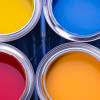
PMMA microspheres that are light stable, heat and chemical resistant, as well as available in a wide variety of colors.
Metallic and Effect Pigments

Microscopic aluminum flakes finely dispersed in an organic-solvent or aqueous-based carrier. Available in a variety of metallic effects and colors. Resin-coated grades for greater weatherability/chemical resistance and design grades for tighter particle size distribution.
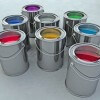
Pigment dispersions with high optical transparency providing visibilty of the underlying properties of substrates, such as metallized surfaces. Stable dispersions in a range of colors, solvents, and carrier resins.
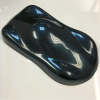
Reduced titanium oxide (TiOx)-coated mica and glass microparticles for a deeper pearlescent black compared to traditional mica-and glass-based pigments. Good dispersability, stability in water, as well as heat and chemical resistance.
Resins

Mono- and multi-functional cycloaliphatic epoxies. Grades include low viscosity, good transparency, high heat resistance, high Tg, and good electrical properties. Non-yellowing with high flexibility and toughness. Suitable for thermal cure or UV cure (cationic).

Mono- and multi-functional aliphatic epoxy crosslinkers, reactive diluents, and modifiers. Grades include high functionality, varying degrees of water solubility, low chlorine content, hydroxyl functionality, and bio-based content. Low viscosity and non yellowing. Provides good adhesion to metal and nylon substrates.

Di-functional hydrogenated bisphenol A epoxy resin that provides excellent resistance to UV degradation. It is a highlighted grade in the DENACOL™ series of aliphatic epoxies.
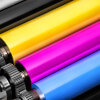
Hydroxy-functional epoxy acrylates and methacrylates for UV/EB-curable ink, coating, and adhesive applications.

Multifunctional acrylated or epoxidized silsesquioxane with ladder-type or random structures. High transparency, high heat resistance, and high UV resistance. High refractive index grade available.

Low Tg functionalized aliphatic acrylic esters. Low impurities, low residual monomer content, high molecular weight with narrow weight distribution. Three possible functional groups (COOH, OH, epoxy). Provides flexibililty, tack, cohesion, and peel strength.

EPOLEAD PB3600 is a premium resin modifier that imparts flexibility and improves impact resistance characteristics in cured products without negatively impacting adhesiveness when formulated with polyamine and/or anhydride curing agents. Additional benefits include: Lower epoxy-equivalent weight compared to conventional epoxidized polybutadienes Contains both epoxy groups and vinyl groups in the molecule, with terminal hydroxyl groups
Smart Coatings

Formulators know the challenge of balancing additive properties when formulating conductive materials, such as coatings, plastics and other end-use applications. Alternate materials can make electroconductivity difficult to customize and may provide poor stability and inconsistent conductivity performance. Using ATO-based additives addresses these challenges. Featuring both ATO and ATO-coated TiO2, Nagase supplies functional materials with higher

EPOLEAD PB3600 is a premium resin modifier that imparts flexibility and improves impact resistance characteristics in cured products without negatively impacting adhesiveness when formulated with polyamine and/or anhydride curing agents. Additional benefits include: Lower epoxy-equivalent weight compared to conventional epoxidized polybutadienes Contains both epoxy groups and vinyl groups in the molecule, with terminal hydroxyl groups

Award-winning reactive coating for corrosion protection of carbon steel and galvanized surfaces. Produces a stable oxidation layer, which prevents further rusting. Minimum surface preparation and low maintenance. Zinc-rich grade available.

UV-curable urethane acrylate oligomers. Resilient hardcoats, low shrinkage, and scratch recovery properties. Several molecular weights and viscosities.
UV-Curable Coatings Materials

Extensive line of low and high functionality monomers and oligomers for radical-UV curing.

Mono- and multi-functional aliphatic epoxy crosslinkers, reactive diluents, and modifiers. Grades include high functionality, varying degrees of water solubility, low chlorine content, hydroxyl functionality, and bio-based content. Low viscosity and non yellowing. Provides good adhesion to metal and nylon substrates.

Di-functional hydrogenated bisphenol A epoxy resin that provides excellent resistance to UV degradation. It is a highlighted grade in the DENACOL™ series of aliphatic epoxies.

Hydroxy-functional epoxy acrylates and methacrylates for UV/EB-curable ink, coating, and adhesive applications.

Electronics, displays, films, industrial, automotive applications.
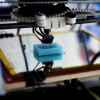
Reactive monomers effective in cationic UV-curing for reducing viscosity and increasing the cure speed of glycidyl ethers.

EPOLEAD PB3600 is a premium resin modifier that imparts flexibility and improves impact resistance characteristics in cured products without negatively impacting adhesiveness when formulated with polyamine and/or anhydride curing agents. Additional benefits include: Lower epoxy-equivalent weight compared to conventional epoxidized polybutadienes Contains both epoxy groups and vinyl groups in the molecule, with terminal hydroxyl groups
Waterborne Crosslinkers

Mono- and multi-functional aliphatic epoxy crosslinkers, reactive diluents, and modifiers. Grades include high functionality, varying degrees of water solubility, low chlorine content, hydroxyl functionality, and bio-based content. Low viscosity and non yellowing. Provides good adhesion to metal and nylon substrates.

Waterborne crosslinkers with various Tg’s. Improved moisture resistance, heat resistance, drying time, film properties, and adhesion to substrates, such as polyester. Available in emulsion, solution, or granule form for compounding into thermoplastics. Combines fast cure with long pot-life at room temperature.
